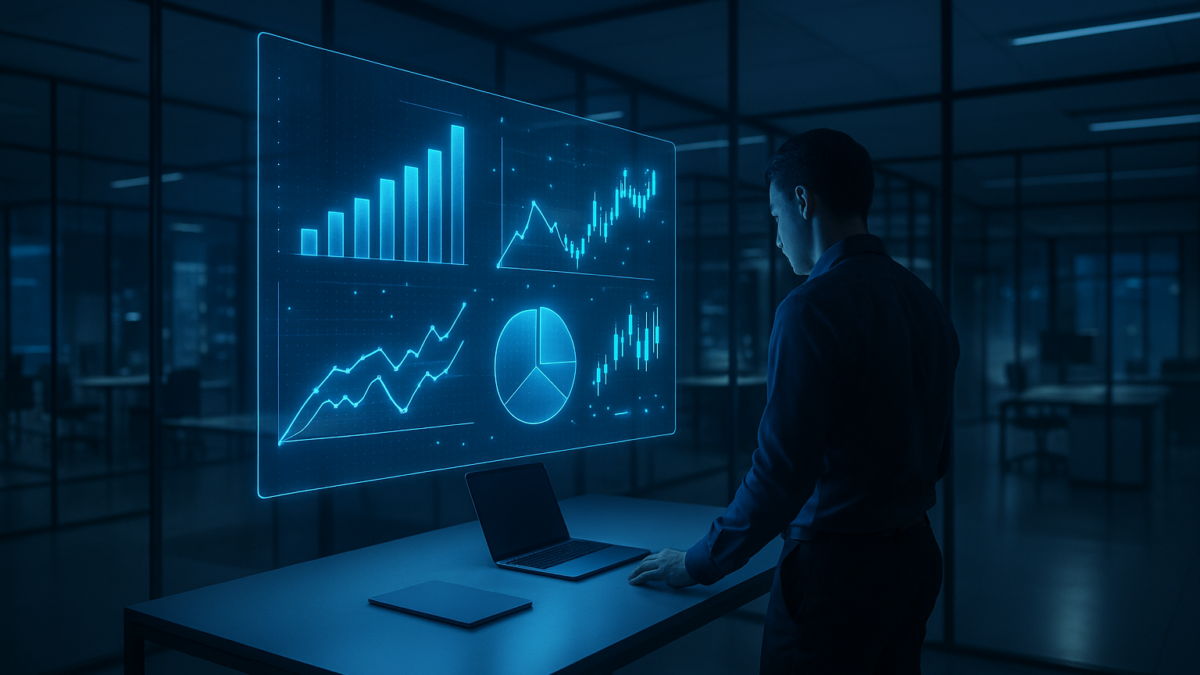Holographic Displays Are Real Now—And They’ll Change How You Work
Table of Contents
Introduction
In the world of futuristic tech, holographic displays have long seemed like something out of a sci-fi movie. But in 2025, that’s no longer true. What once felt like a fantasy is now becoming an accessible part of our work lives. Companies around the globe are embracing holograms—not as gimmicks, but as practical tools to revolutionize how we meet, collaborate, design, and present data.
So, how exactly are holographic displays changing the workplace? Let’s explore.
What Are Holographic Displays?
Holographic displays are a type of technology that allows three-dimensional images to appear in real space, viewable from multiple angles, without the need for glasses or headsets. They create realistic illusions of objects or people hovering in the air.
Some technologies enabling this include:
- Light field displays (used by companies like Looking Glass Factory)
- Volumetric displays
- Laser plasma-based projections
Unlike AR and VR, which require wearable hardware, holographic displays make it possible to interact with 3D visuals naturally—using hand gestures or voice commands.
How Holographic Displays Will Transform Workspaces
Reimagining Remote Meetings
With remote and hybrid work models here to stay, video calls have become essential—but also exhausting. Holographic displays are changing that.
Imagine stepping into a conference room and seeing a life-sized hologram of your colleague sitting across the table. Companies like PORTL and ARHT Media are making this real. Their hologram boxes enable 3D virtual presence, dramatically improving communication and engagement in meetings.
Benefits:
- Natural eye contact
- Realistic gestures and expressions
- Increased presence and collaboration
Revolutionizing Product Design and Prototyping
Industries like architecture, engineering, manufacturing, and automotive are already leveraging holograms to visualize and manipulate 3D models.
With holographic displays:
- Designers can inspect digital prototypes from all sides
- Teams can collaborate in real time across the globe
- Changes can be made instantly—saving time and material costs
Companies like Looking Glass are helping brands turn 3D designs into real-time, viewable holograms.
Interactive Data Visualization
Holographic dashboards take charts and spreadsheets to the next level. Instead of flat visuals, you can explore data in 3D, uncovering trends and patterns more intuitively.
Use cases include:
- Financial forecasting
- Medical imaging
- Scientific simulations
- Marketing campaign tracking
Holograms help decision-makers see the bigger picture—and act on insights faster.
Enhanced Training & Education
Another major workplace application is training and simulation. With holographic visuals, complex concepts become easier to grasp.
For example:
- Medical professionals can examine a 3D model of the human body
- Mechanics can practice repairs on a holographic engine
- Sales teams can learn product specs using interactive models
Holograms make learning immersive, memorable, and scalable.
Challenges to Widespread Adoption
Despite the potential, holographic displays still face several hurdles:
- High Costs: Many systems are still expensive for SMEs
- Limited Content Tools: Creating high-quality 3D content requires skill
- Environment Requirements: Proper lighting and space are needed
- Standardization: No universal format for holographic content yet
However, as the technology matures, prices are dropping and solutions are becoming more user-friendly.
Who’s Leading the Holographic Race?
Several companies are pushing this space forward:
- Looking Glass Factory: Pioneers in light field holographic displays
- PORTL: Producing life-size hologram pods for communication
- Leia Inc.: Focused on 3D tablet and mobile displays
- Voxon Photonics: Specializing in volumetric displays for education and simulation
Even Apple and Meta are exploring holographic tech for future devices.
Real-World Use Cases
- Real Estate: Showcasing 3D building layouts to clients
- Healthcare: Projecting organs and anatomy for surgical planning
- Retail: Virtual product demos in stores
- Education: Interactive holographic classrooms
These use cases show that holographic displays are more than a visual gimmick—they’re a tool for real business impact.
Final Thoughts: A Glimpse Into Tomorrow’s Work
Holographic displays are no longer a far-off dream. They’re here—and transforming how we think about collaboration, communication, and creativity at work. As adoption becomes more mainstream, we’ll likely see less Zoom fatigue and more holographic presence. Meetings will feel real. Prototypes will be interactive. Data will come alive.
Work won’t just be done on screens—it will happen in space.
You May Also Like: Gemini vs ChatGPT: Which AI Chatbot Wins in 2025?





